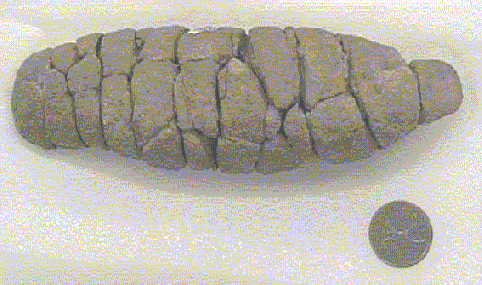
NMC 40750 *
There are many factors that contribute to how well coprolites are preserved. Animal feces, being soft organic material are subject to all kinds
of destruction and alteration.
In 1962, Schafer explained that certain coprolites of marine invertebrates
would never become fossilized due to their soft, slimy and sandy nature. For example,
some fish leave behind shapeless, flaky dirt and gastropods leave slimy, shapeless sacs.
Most coprolites are destroyed by moving water, such as wave currents, in higher energy
environments.
The environmental conditions that favor feces preservation are low
energy zones and wet climates. These conditions are easily satisfied in shallow
marine environments, fluvial deposits, ponds or watering holes, floodplains, swamps,
streams, and muddy lakes or estuaries.

An interesting tid-bit of information is that during the last few million years, cave environments and permafrost have provided excellent conditions for organic rich coprolite preservation. This is so because the feces would be protected, in these environments, from invertebrate scavengers and other forms of destruction.
| Back |  |
Next |